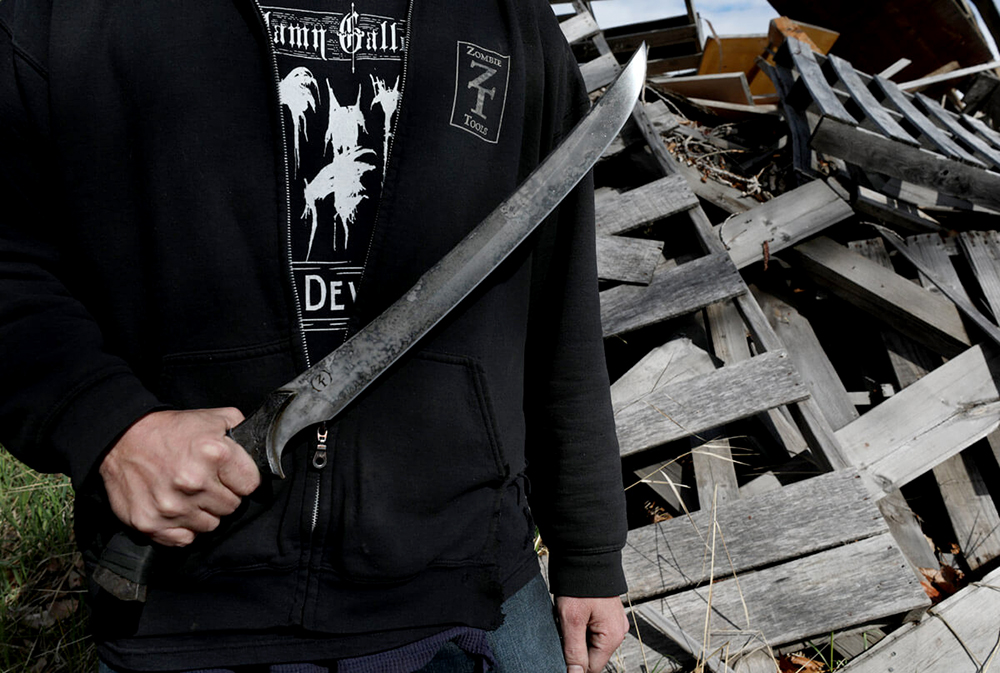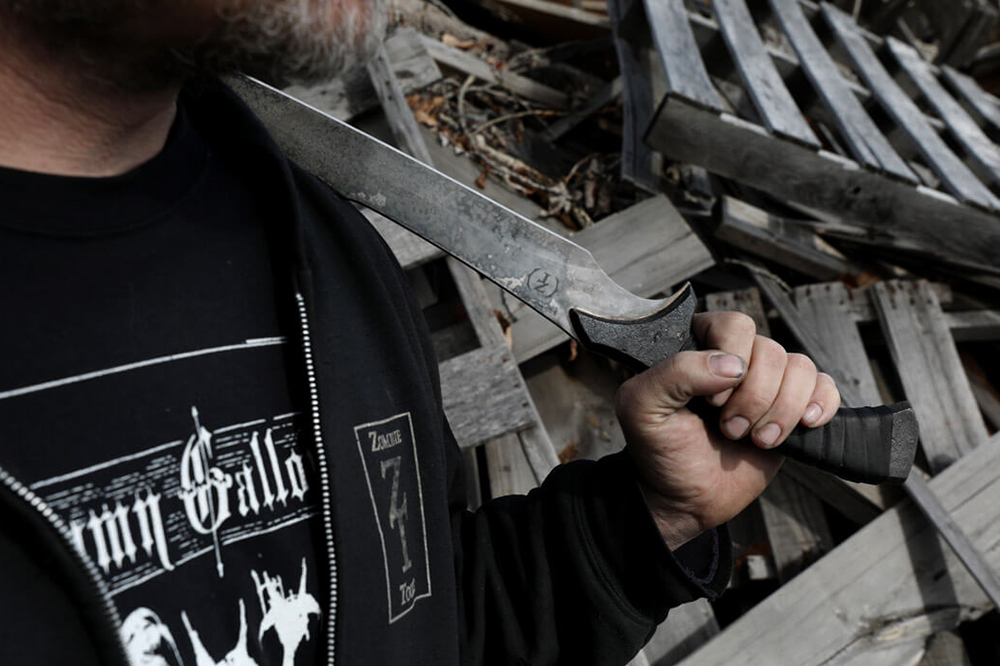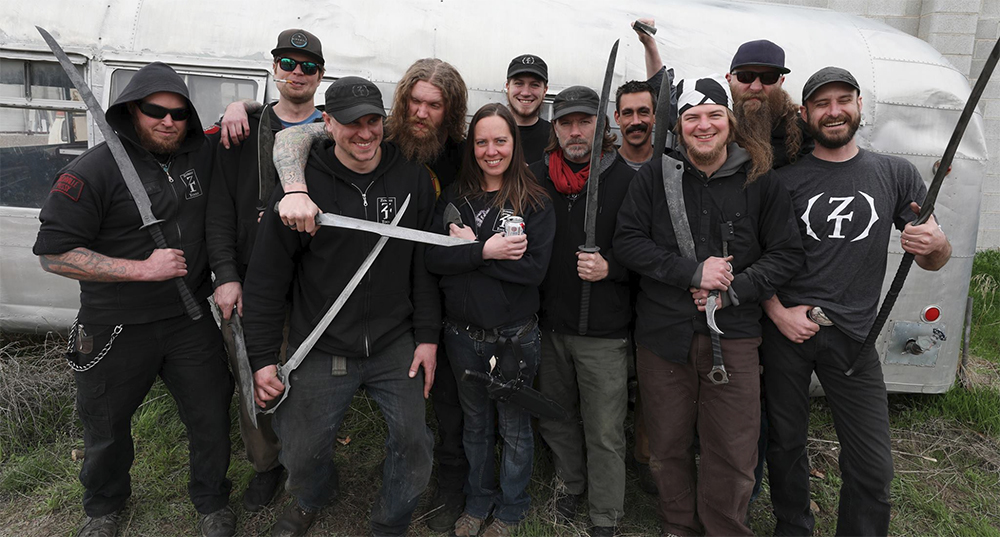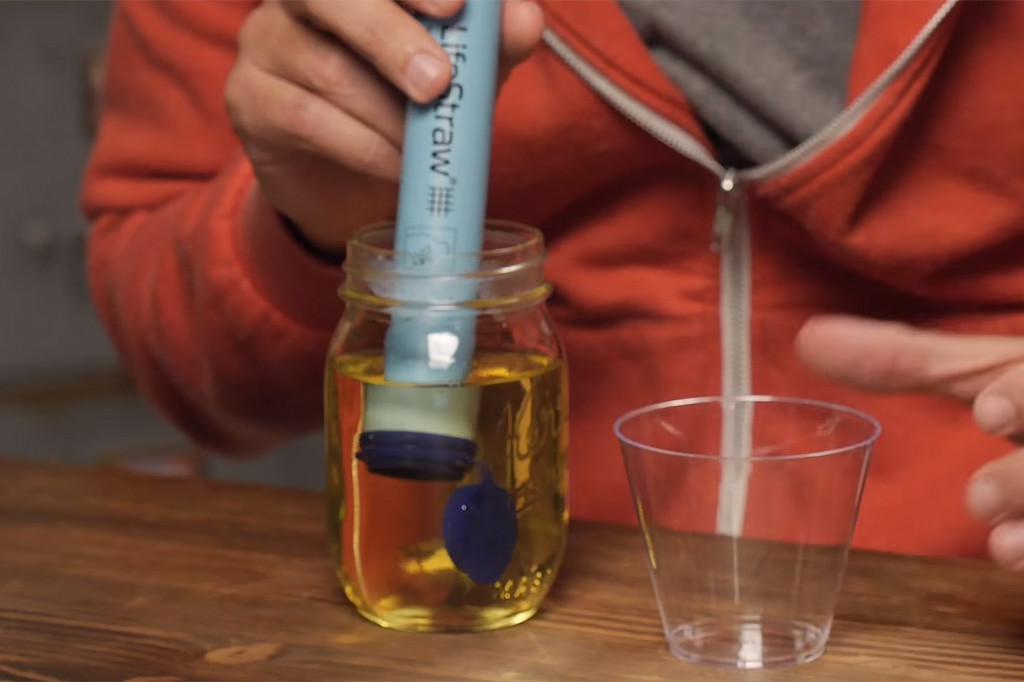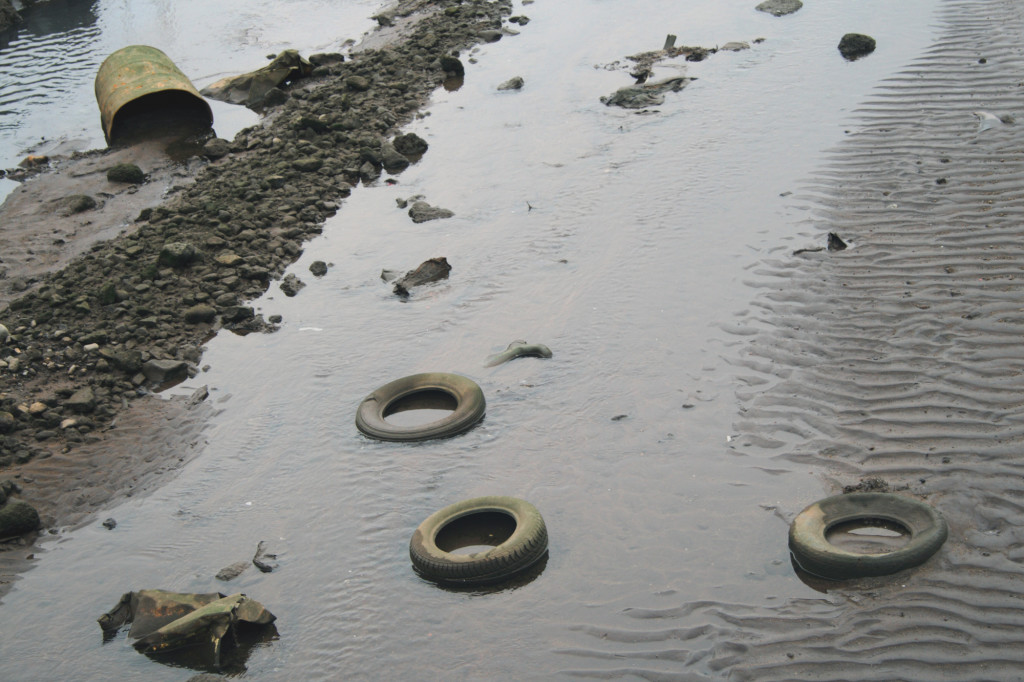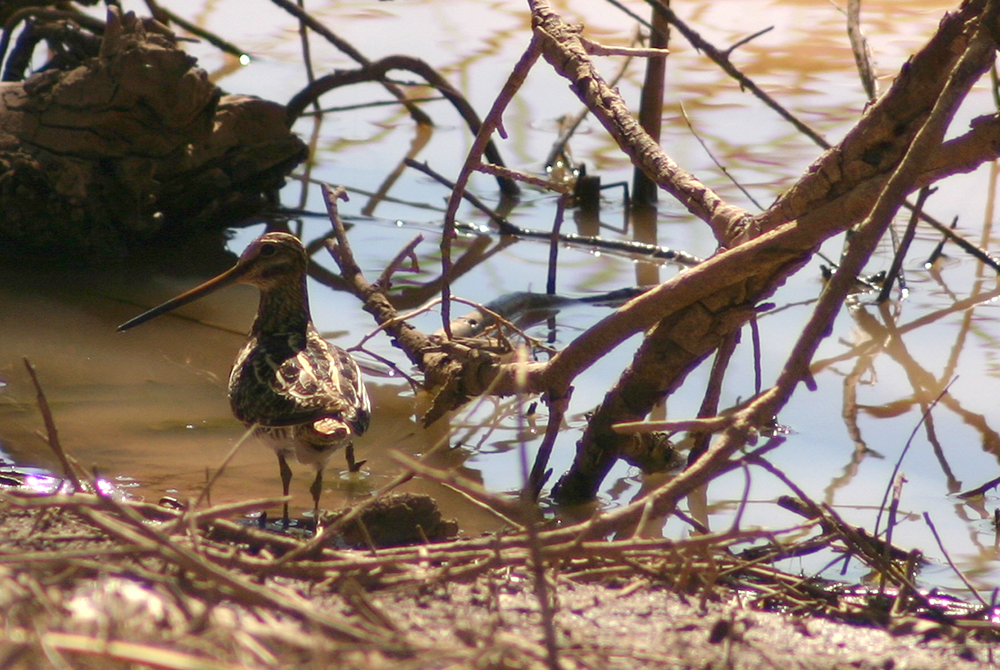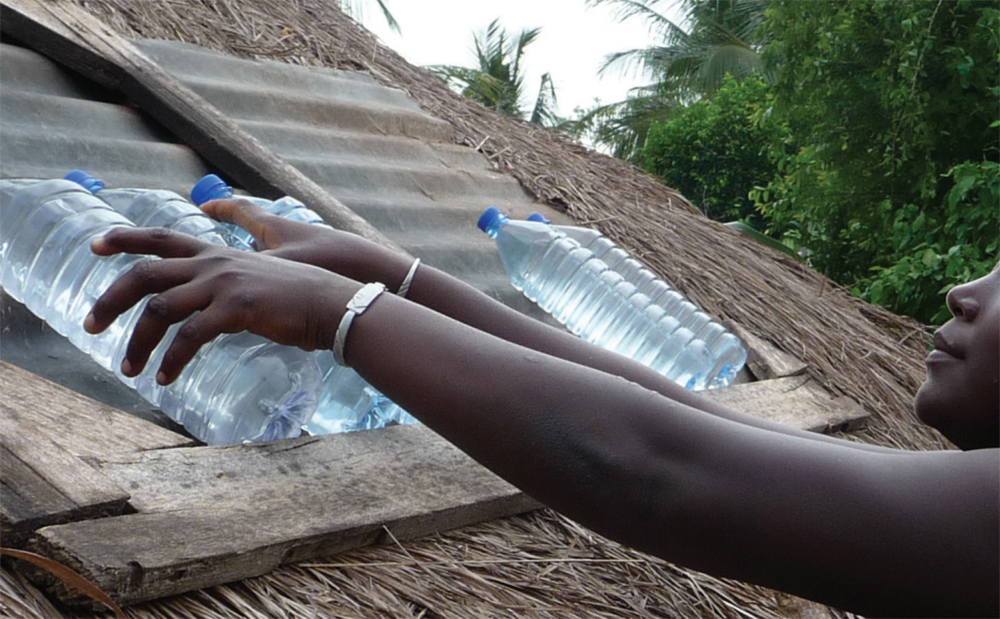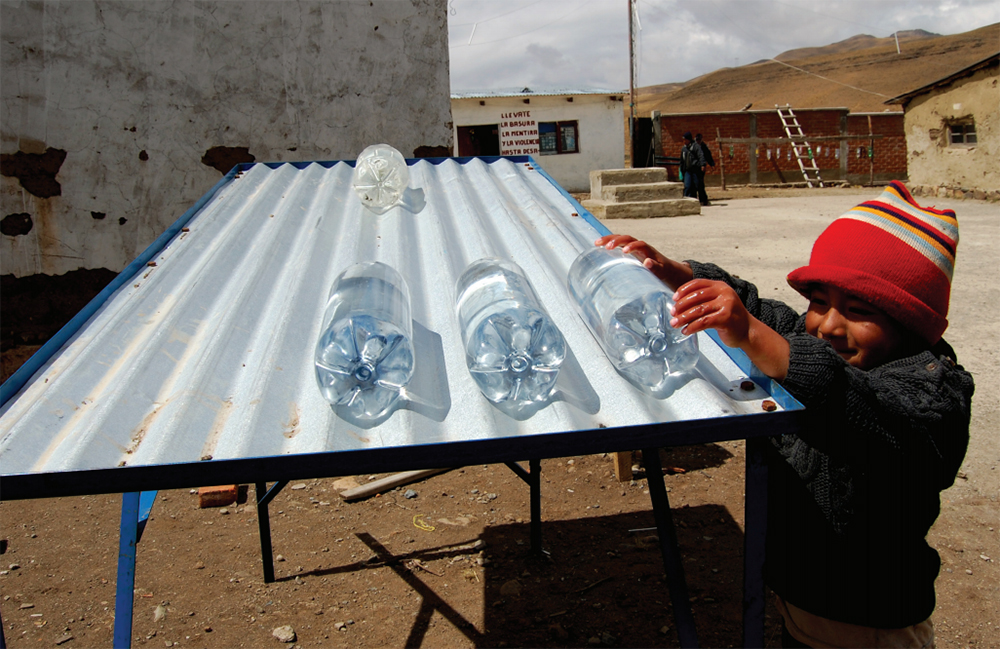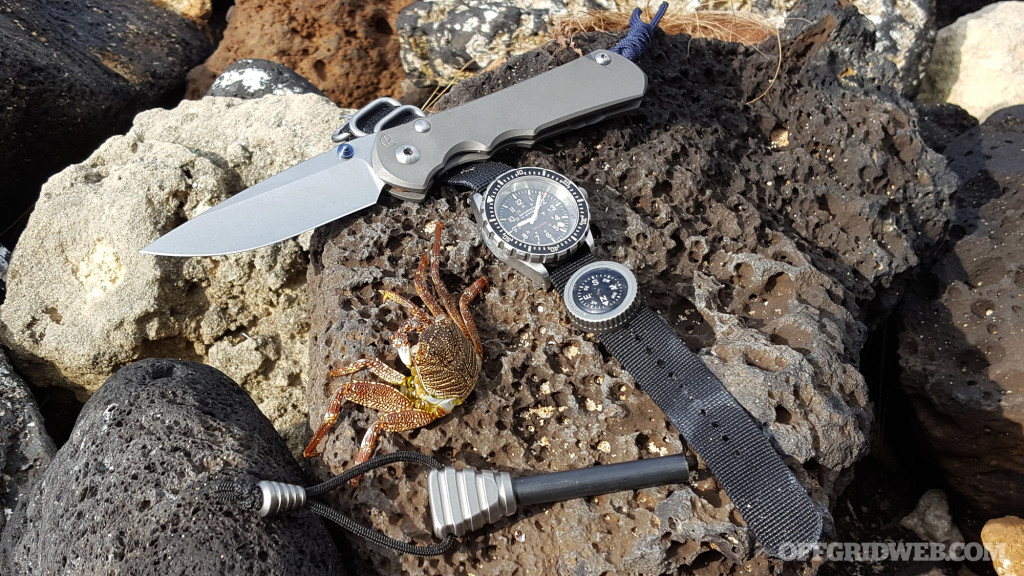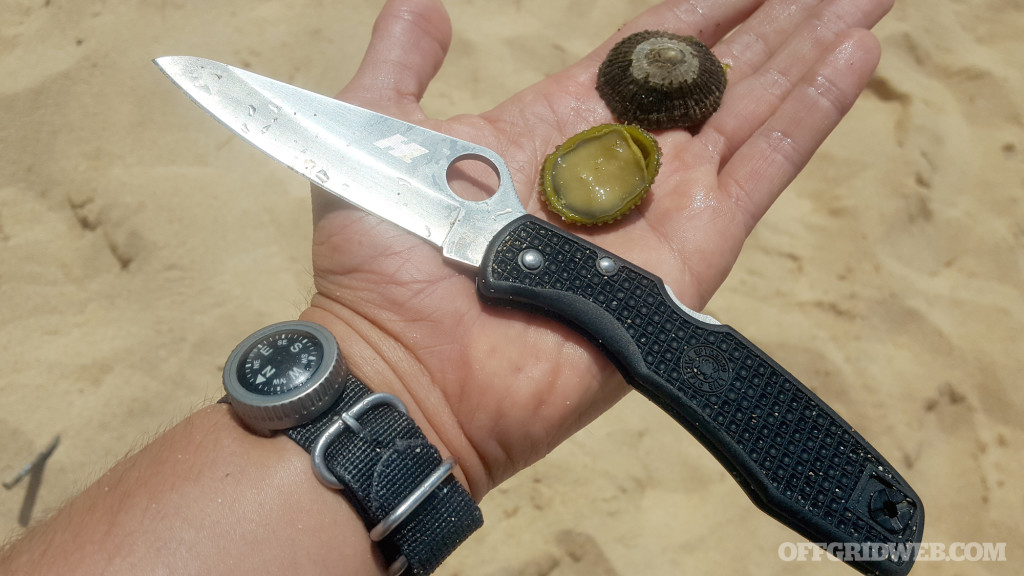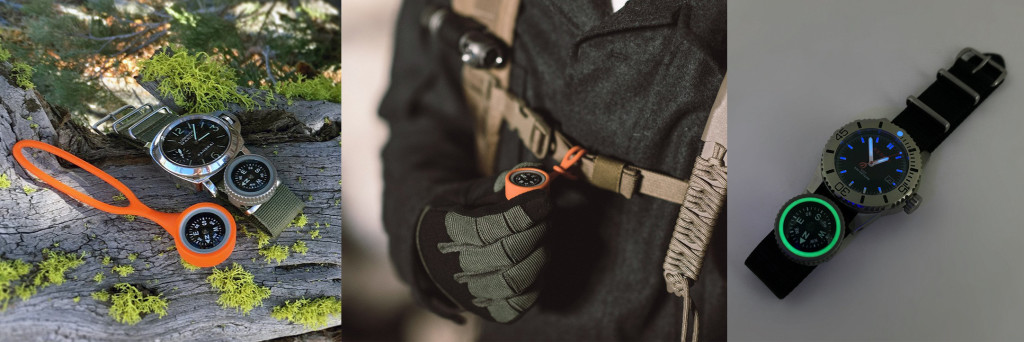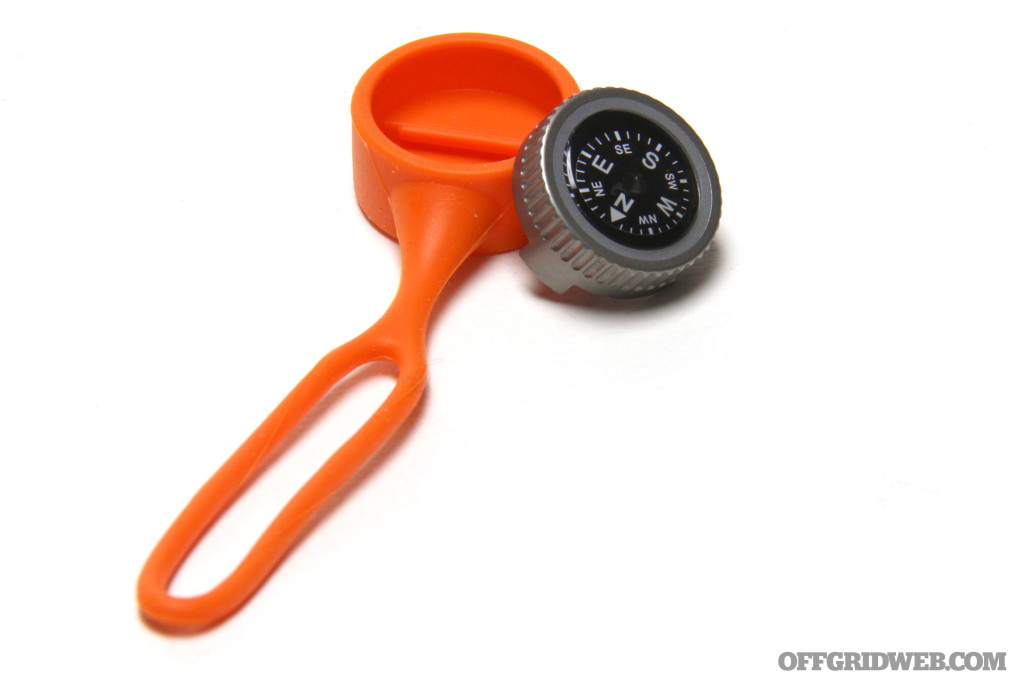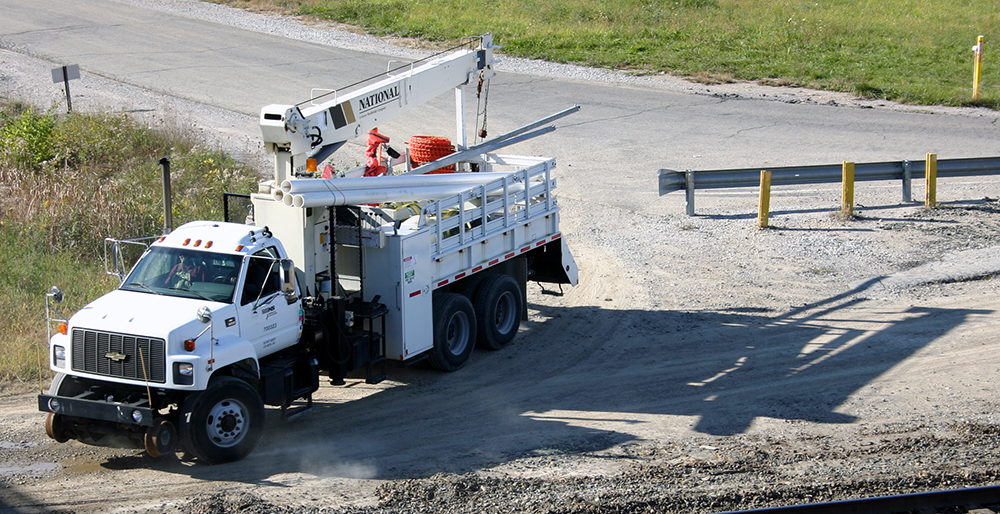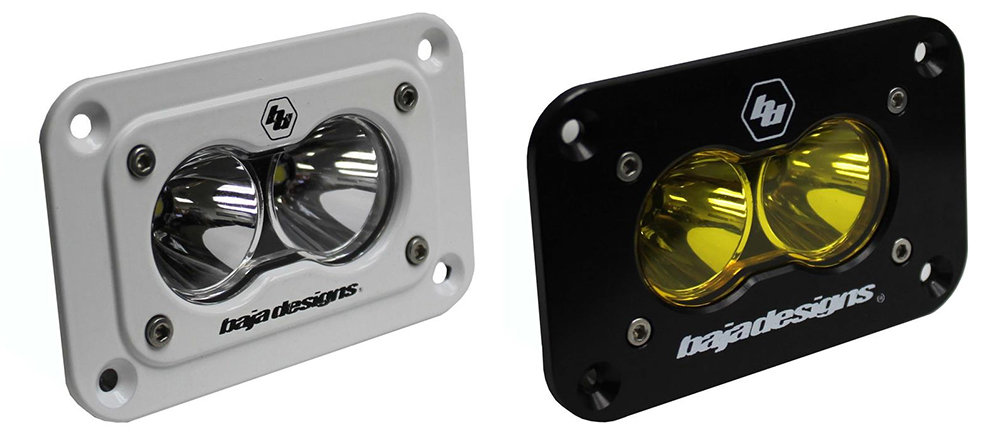The concept of packing light is not a new idea. Horace Kephart, one of the men who helped establish Great Smoky Mountains National Park, had this to say about it in his 1916 classic book Camping and Woodcraft: “This is the hardest problem in outfitting. To equip a pedestrian with shelter, bedding, utensils, food, and other necessities, in a pack so light and small that he can carry it without overstrain, is really a fine art.”
Kephart’s idea of “light” varied with the individual and the performance expectations, as you might expect. “If you are a middle-aged city man, soft from a year or more of office work, about 20 pounds on your back is all you ought to carry. A younger man, or one who gets a good deal of daily exercise in the open air, can do the same with 30 pounds, until he gets in training, and then go considerably more.”

Items from the author's lightweight bug-out bag inspired the plan for an even lighter version.
His ideal mild-weather loadout was around 25 pounds, still a reasonable number even by today’s standards. But his dream bag was closer to 10 pounds, what he called a “featherweight kit” made from specially manufactured materials and products. One hundred years after Kephhart published his recommendations, we wanted to see how close we could come to his ideal weight, using modern-day equipment while keeping one eye on his recommendations.
Keep in mind that the production (and upkeep) of a bug-out bag is a dynamic process, not a one-and-done creation. The contents are going to change over time based on your evolving skillset, gear preferences, budget, and even your interests and hobbies. There’s no single way to build a featherweight bag. There are dozens of approaches — the following is one potential combination. Don't just copy the list of gear we provide, use it as food for thought to plan your own ultralight bug-out bag.
Bedding and Shelter
“Don’t bed down on the cold, hard earth,” Kephart recommends. We tend to agree with this advice. Trying to tough it out by sleeping on hard ground can short-circuit your decision-making ability, and directly impact your stamina the next day.
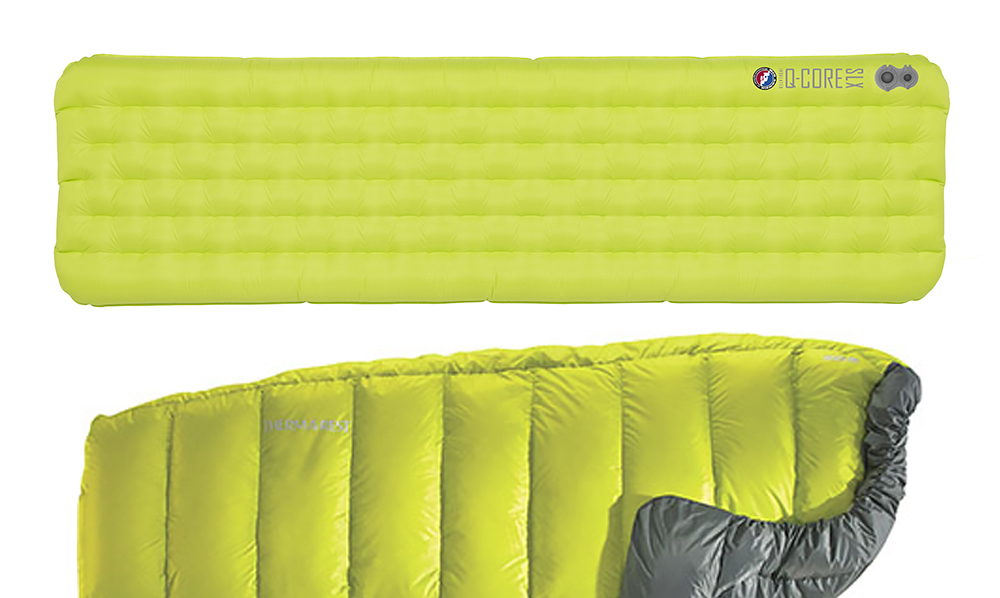
Top: the Q-Core SLX sleeping pad. Bottom: the Corus HD Technical Quilt.
His choice for bedding was a lightweight cloth bag stuffed with leaves, and a smaller leaf-stuffed bag for a pillow. Without the leaves these bags weighed in at 1.2 pounds. Primitive by today's standards, but it got the job done in the early 1900s. Fast-forward to 2017, and we’d favor the Q-Core SLX Insulated Sleeping Pad from Big Agnes, weighing in at 1.1 pounds. For warmth, a Corus HD Technical Quilt from Thermarest only weighs 1.4 pounds more. So far, so good.
To Kephart, a tent was only feasible if two or more people were hiking together. When going alone (at least in moderate temperatures), a shelter cloth and mosquito netting worked just fine and weighed about 2.5 pounds. It could be rigged between two small trees or forked stakes as necessary. The modern day version of this idea would be the Thru-Hiker 70 Wing Shelter paired with a Thru-Hiker Mesh House 2 from MSR. The shelter weighs just 12 ounces while the mesh weighs 14 ounces, for a total of 26 ounces or just over 1.5 pounds.
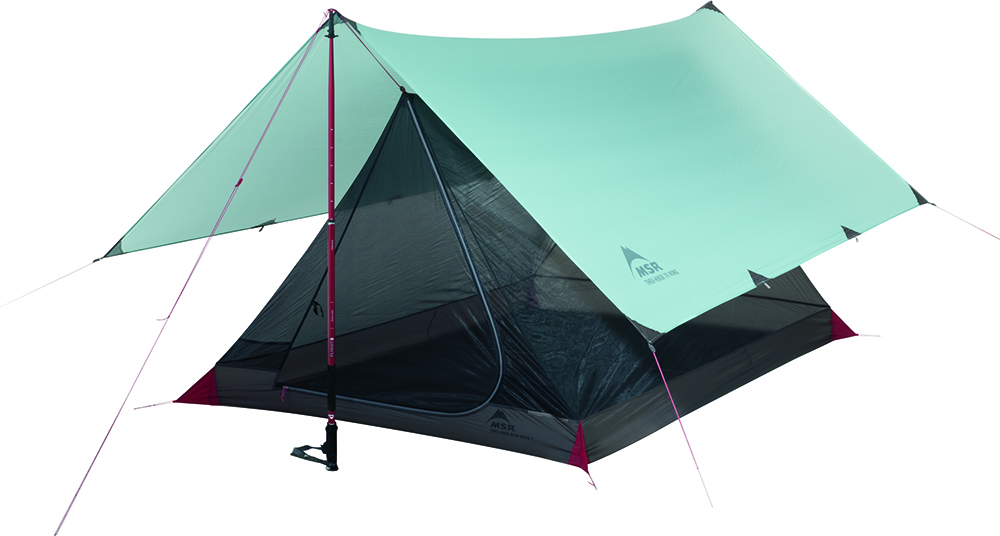
Trekking poles support a rain fly over the Mesh House shelter. Photo courtesy of MSR / Earl Harper.
This mesh-shelter system can still be rigged using trees or forked stakes, as Kephart did. But we like the idea of using trekking poles for covering long distances, in order to minimize strain on our legs and increase our daily range. So with that pound we saved by using ultra-light materials, we’ll add one more pound back and throw in a pair of lightweight trekking poles. We’ll use them all day and at night when it’s time to set up shelter, we don’t have to waste time looking for suitable trees or sticks since we can just anchor the poles into the ground to use as shelter supports.
Clothing
“Footwear is the most important item,” Kephart says. “When you seek a guide in the mountains he looks first in your eyes and then at your shoes. If both are right, you are right.”
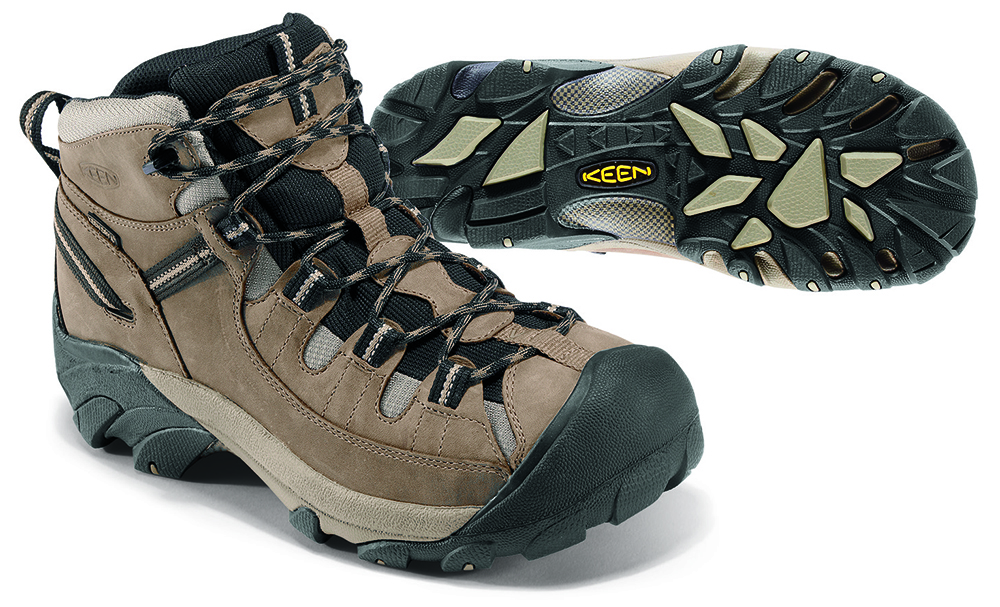
There are lots of places to try and skimp on weight, but when you're long-distance trekking, your footwear is not that place. Whatever boots you decide on, make sure they fit you perfectly without having to use tricks like very thick or thin socks. We’ve had great luck with hiking boots from Keen such as the Targhee II Mid.
Kephart recommended against carrying a heavy waterproof jacket, instead electing to layer with a lightweight waterproof jacket coupled with a medium-weight sweater. These days we’d find a midweight fleece and couple it with the Airshed Pullover from Patagonia. This soft-shell jacket, weighing in at a ridiculously minimal 3.7 ounces, converts into its own stuff sack with a built-in carabiner loop so that you can always keep it within reach.
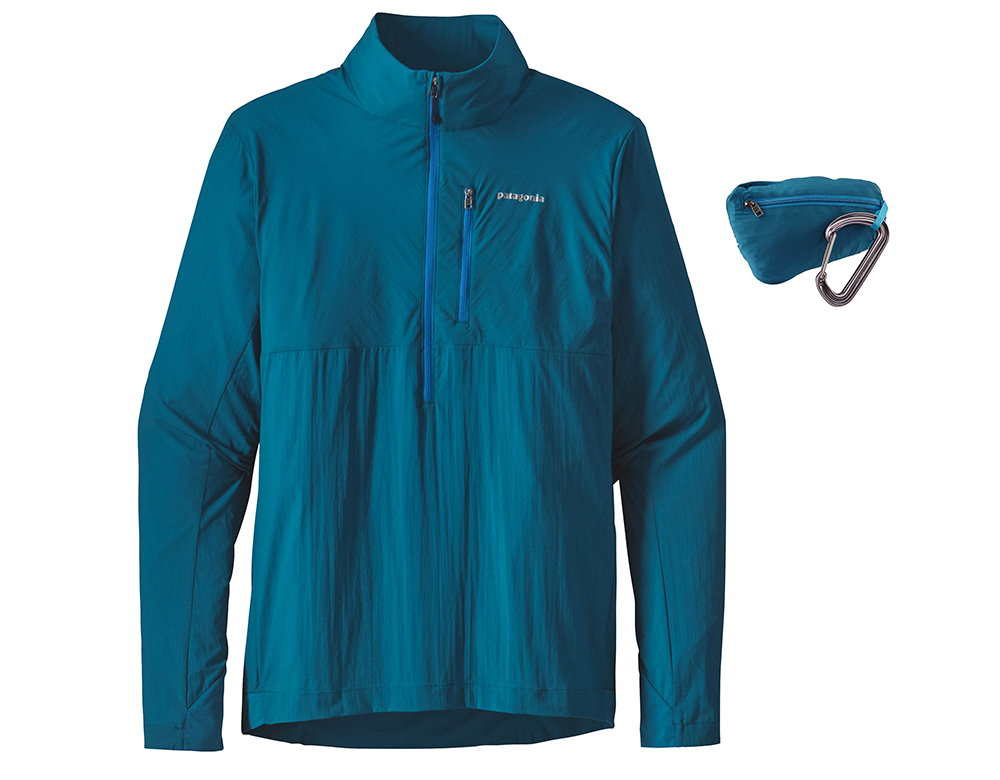
The Patagonia Airshed pullover packs down into a stuff sack for compact storage.
We won’t get into pants or shirts in this article, as the requirements vary so widely based on an individual's circumstances. However, we will talk to you about your underwear. Carry spares. As Kephart says, “When on a hike, take your bath at close of day, instead of in the morning; then change to fresh underwear and socks, and put on your sweater and trousers to sleep in. Fresh dry underclothes are as warm as an extra blanket would be if one slept in the sweaty garments he wore during the day — to say nothing of cleanliness.”
Hydration and Nutrition
Kephart’s cooking kit revolved around a frying pan, aluminum utensils, a broad shallow pot (to boil water faster), and a little tin cup he hooked to the outside of his pack. His kit weighed about 2.1 pounds.
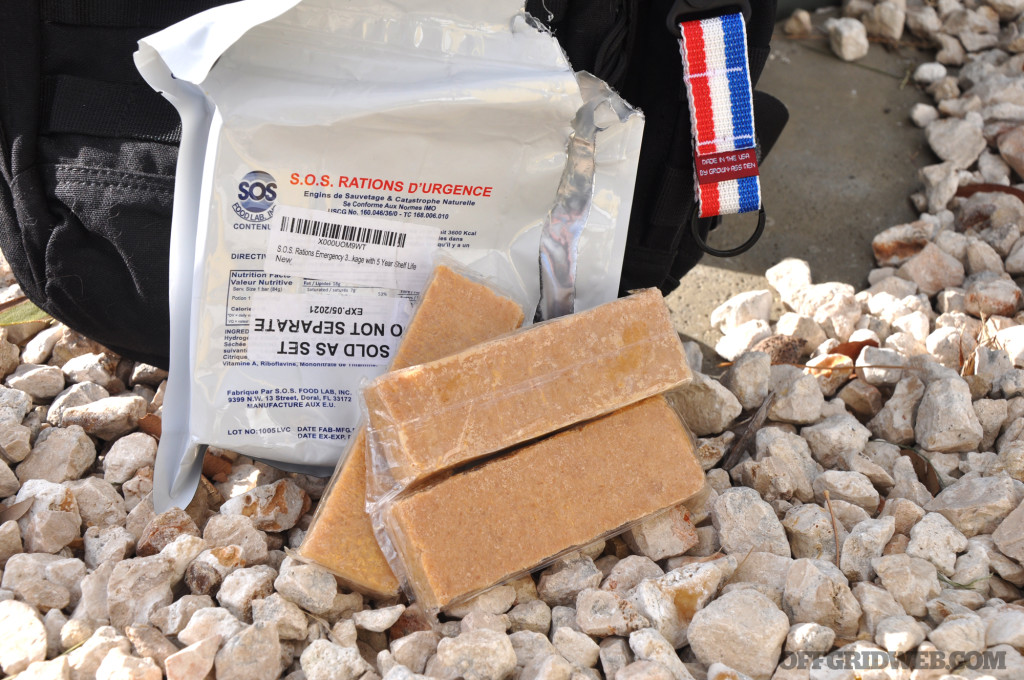
Of course, he was planning on cooking over an open fire. And if you’re in the woods like he was planning to be, then cooking fuel is literally growing on trees. However, what if you’re bugging out to an arid region, or a ruined urban area where old-growth forests and wild game are the kind of thing you only see in museum dioramas? And how far away will the smoke from your campfire be visible, broadcasting your location?
Personally, we’re not trying to cook Instagram-worthy blueberry flapjacks in a frying pan. This isn’t Memorial Day Weekend at the lake, and we’re not trying to impress anyone here. We’re focusing on what can give us a head start on survival and can stay fresh in our packs for years.
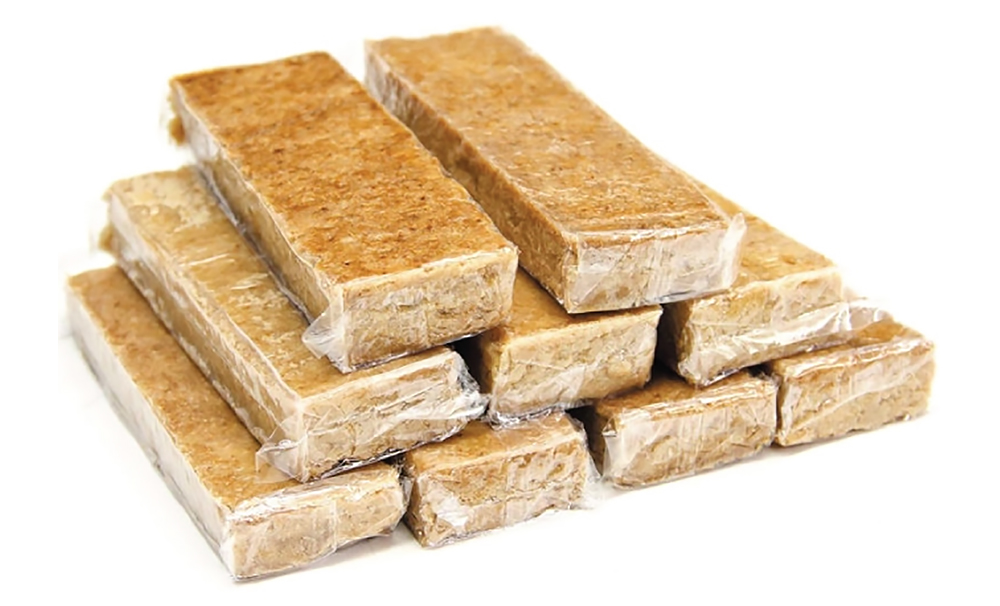
These coconut-flavored lifeboat rations are a compact and ready-to-eat food source.
We thought of packing a small butane camp stove with fuel and a bunch of freeze-dried meals, but then reconsidered. The stove and fuel add extra weight. And cooking the meals will require lots of water that we may or may not need to conserve for drinking. So with that in mind, we’ll just pack our coconut-flavored lifeboat rations. They are, surprisingly, not horrible. Nor do they make you thirsty like a salty freeze-dried meal would. Six days’ worth of rations will only set you back 2.2 pounds, so we’re all set.
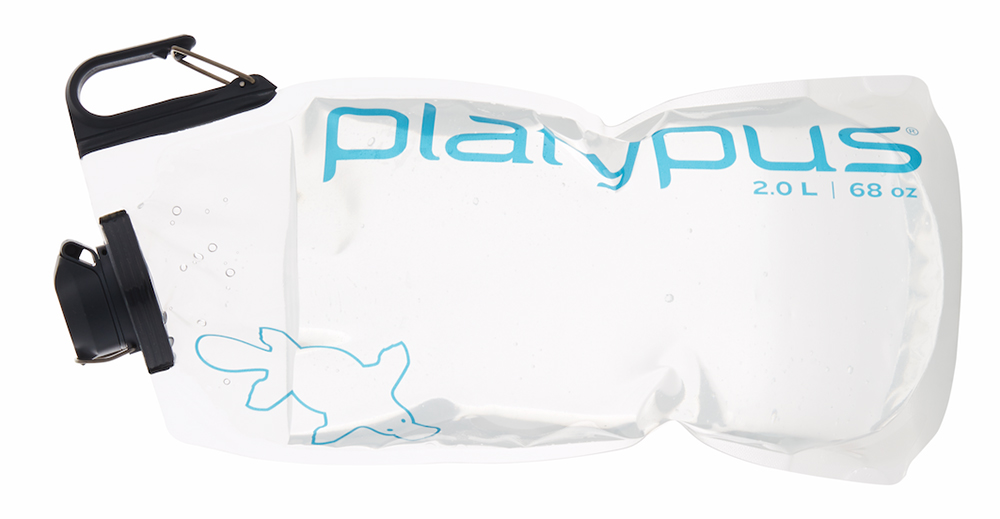
The Platypus water bottles collapse and roll up when empty, and they weigh virtually nothing when dry.
Next up is a hydration plan — even more important than food. We’ll add dual 2.0 liter collapsible water bottles from Platypus (1.8 ounces each) and a TrailShot Pocket-Sized Water Filter from MSR (5 ounces) so we can pump clean water into the bottles. This brings us to a total of 2.7 pounds for our hydration gear and rations. Our choices here are a little bit heavier than Kephart’s, but he also only carried about two to three days’ worth of rations. In our case, we like a bit more caloric leeway.
Keep in mind, a liter of water weighs 2.2 pounds. So if you fill up both of those big Platypus bottles you’ll have nearly 9 extra pounds on your back. This isn’t necessarily a bad thing, since 1 gallon (3.8 liters) of water is a good minimum estimate for how much you’ll consume each day. But if you know you’ll be encountering good water sources, you might consider leaving one of the bottles empty, or even dumping one out if you're certain you’re getting close.
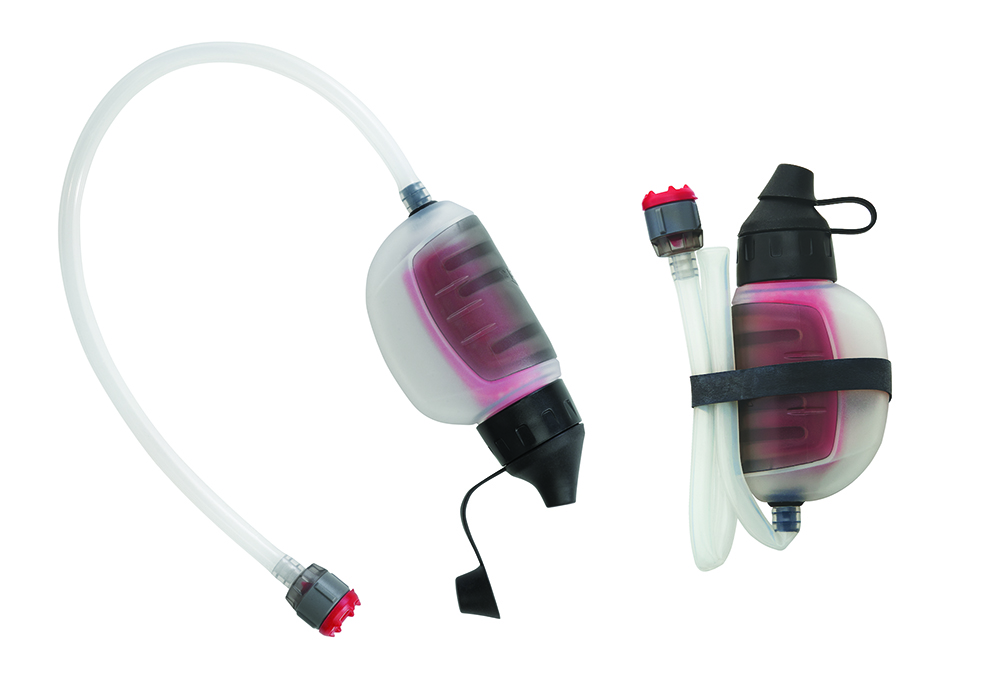
This MSR TrailShot provides a quick clean water source for our Platypus vessels. Photo courtesy of MSR / Earl Harper.
Another way to save on water weight is by “topping off” as much as possible before leaving any water source. If you’ve got a stash of water in your car and you’re about to set out on foot, make sure to take a few extra swallows before stepping off.
Tools
Hand tools are the downfall of many an aspiring survivalist’s light-weight rig. We love tools. And usually we have so many that we can’t wait to stuff our pack with them. Especially when they’re small and light, it’s easy to simply toss one more tool into the bag. I might need that mini titanium prybar. You never know!
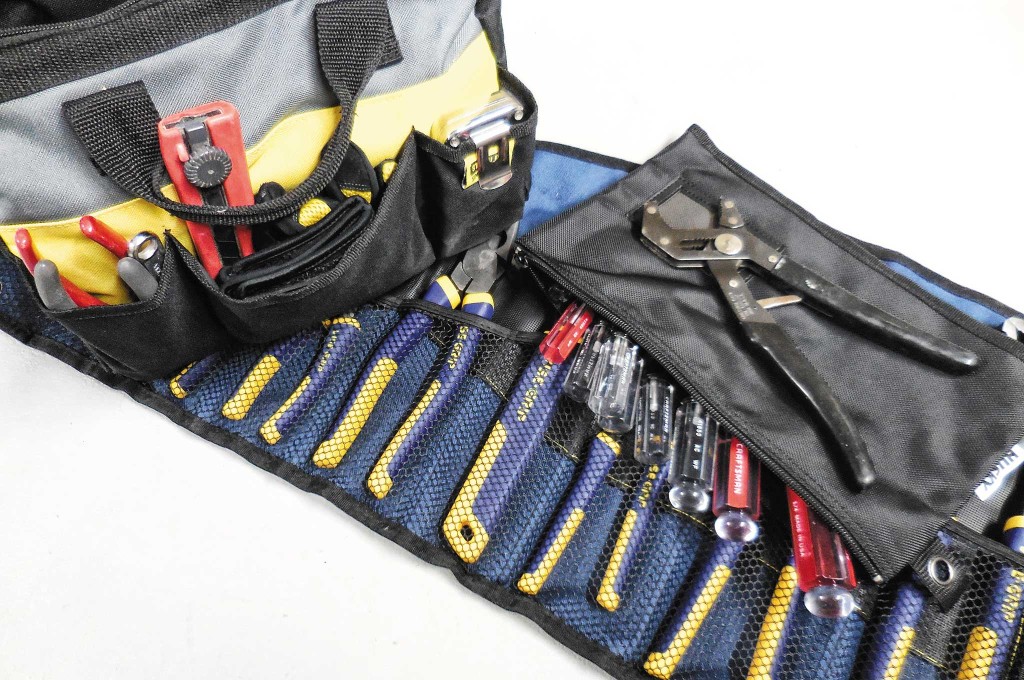
They're useful in your toolbox or truck, but you don't want to be lugging all this around on your back.
That’s true, you never do know. But unfortunately, we also don’t know if we’ll even get a chance to use this lightweight bag. If we want to keep it packed and ready that means we probably won’t be using it on an everyday basis. So if it’s just going to sit somewhere, then we won’t plan on stuffing a lot of every-day-use tools in there. Tools, after all, have a habit of never returning to the bug-out bag.
Trust us, we know. If you invest in high-end gear, you’re going to want to use it. But if you're going to raid your bug-out bag on a regular basis, at least create a packing list for it detailing everything that's inside once you consider it completed for the first time. Then have a logistics day on a regular basis (at least yearly) where you unpack the bag, review the list, and make sure everything that you assumed was going to be available is actually still present and accounted for.

Speaking of gear lists, most of them start with a knife. And the knives that many people carry are over-sized in relation to what they actually end up using them for. With that in mind, we’ll start with the Ultralight LST from Gerber.
This is an inexpensive, diminutive, and somewhat plain-looking American-made knife that will perform a myriad of tasks without complaint. It is a folder, but it's of the tough lockback variety, so the mechanism shouldn't be much of a weak point. As with the cooking, we’re not trying to impress anyone here. And we’re still waiting on that phone call from Delta Force to use our Chuck Norris reflexes and help them take out the leader of ISIS in an epic knife fight. So until that day arrives, we’ll get by with this simple yet functional 1.2-ounce knife.

A heavy cutting tool like this ax would put us way over our ultralight weight goal. So we'll make do with a small...
Actually, since we'd be in serious trouble if something should happen to our only cutting tool, we’ll throw in a spare. These two knives provide redundancy, and still weigh far less combined than a single outdoor fixed blade and sheath. You may opt for a single heavier fixed blade, like the 4.3-ounce Mora Basic 511, but then you'll have no backup if you lose or damage it. That's a choice you'll have to consider.
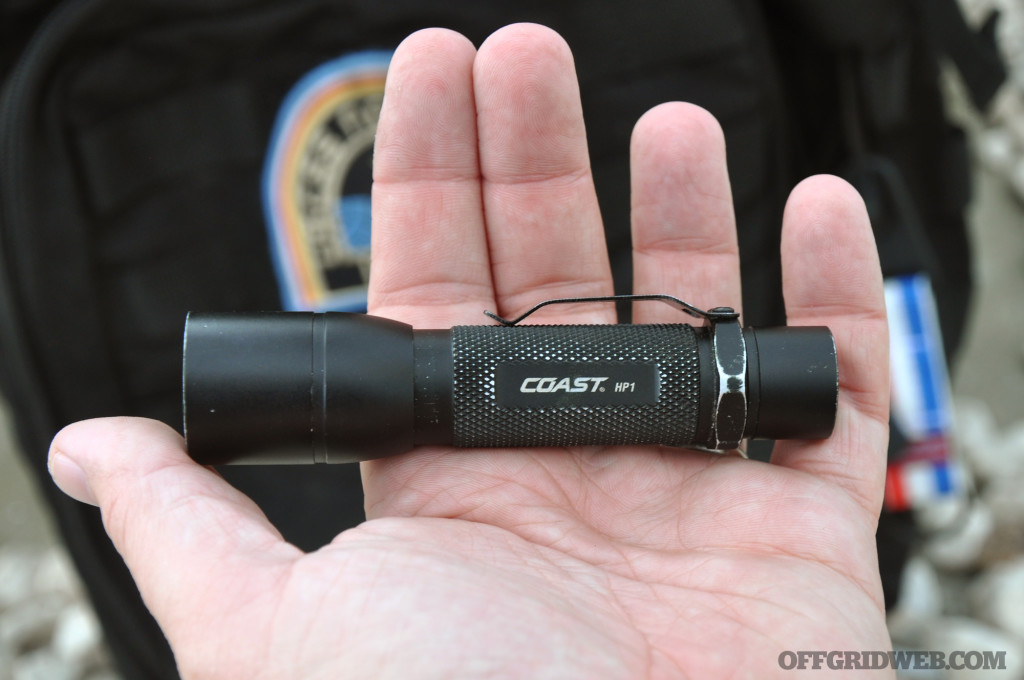
When you enter ultralight territory, even a handheld flashlight can be far too heavy to include. We'll need...
We’ll take the same “two is one and one is none” approach to a light source as we do to our knife. As much as we’d love to bring our behemoth Coast HP17 flashlight, which we may (or may not) have used to transmit profane Morse code signals to the International Space Station, we just can’t afford to haul the extra two pounds (three with its D cell batteries). Instead we’ll pack two compact Coast G19 Inspection Beam Penlights, with the batteries stored reversed to prevent terminal corrosion. They sip power, using a single AAA battery, and weigh only 1.5 ounces each (2 ounces with the battery inside).

This tiny Coast G19 runs on a single AAA battery, but provides enough light for basic tasks at night.
We don’t go anywhere without carrying some type of first aid kit. In this case we’d choose the Micro IFAK from North American Rescue. It weighs 12 ounces and gives us the ability to treat anything from abrasions and cuts to bleeding in major extremities. The kit comes vacuum-sealed, helping to prevent deterioration of the contents, improving its shelf life, and making it that much easier to stick into our pack and forget about — until we need it.
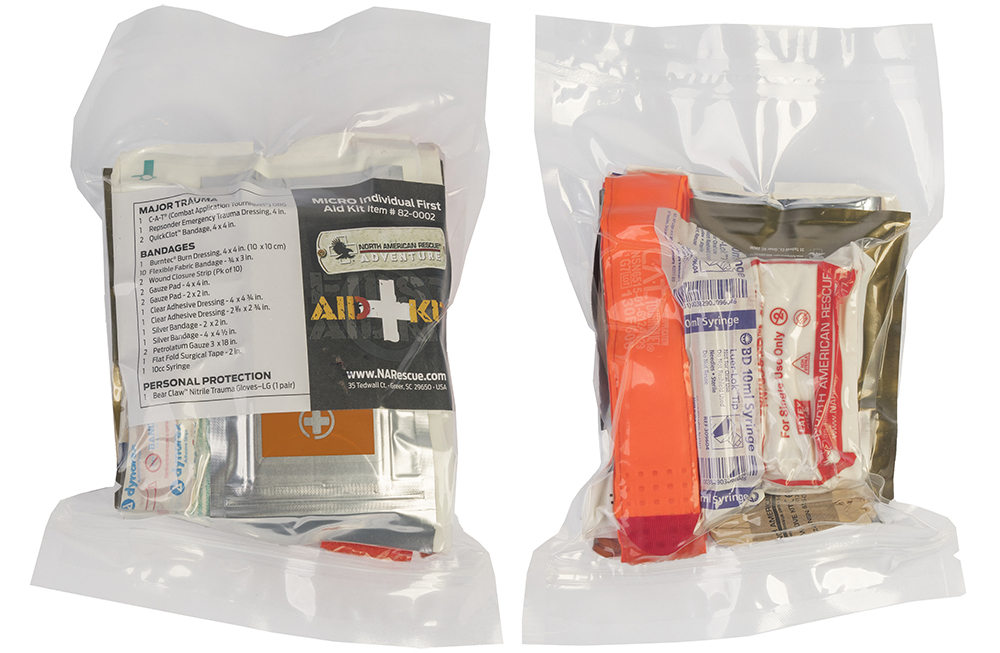
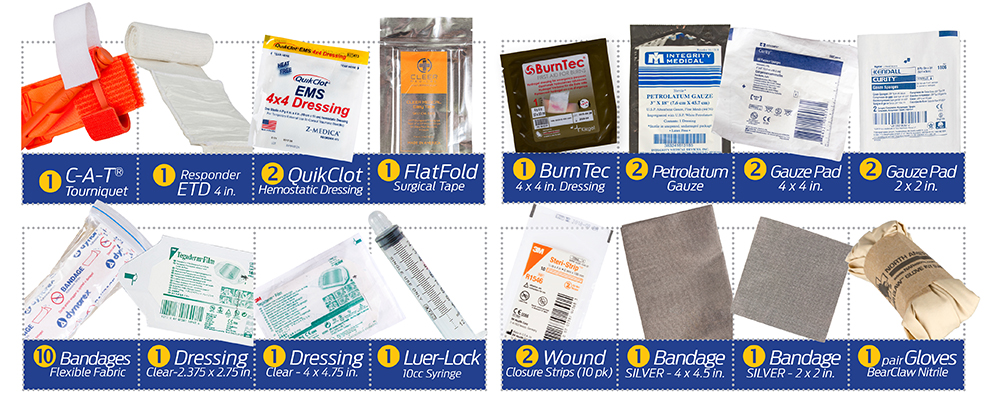
We also want a basic, no-frills compass that still includes scale tools for easily reading distances off a map. The Brunton TruArc 3 Base Plate Compass fills that role, weighing only 1.1 ounces yet remaining reliable and easy to read.
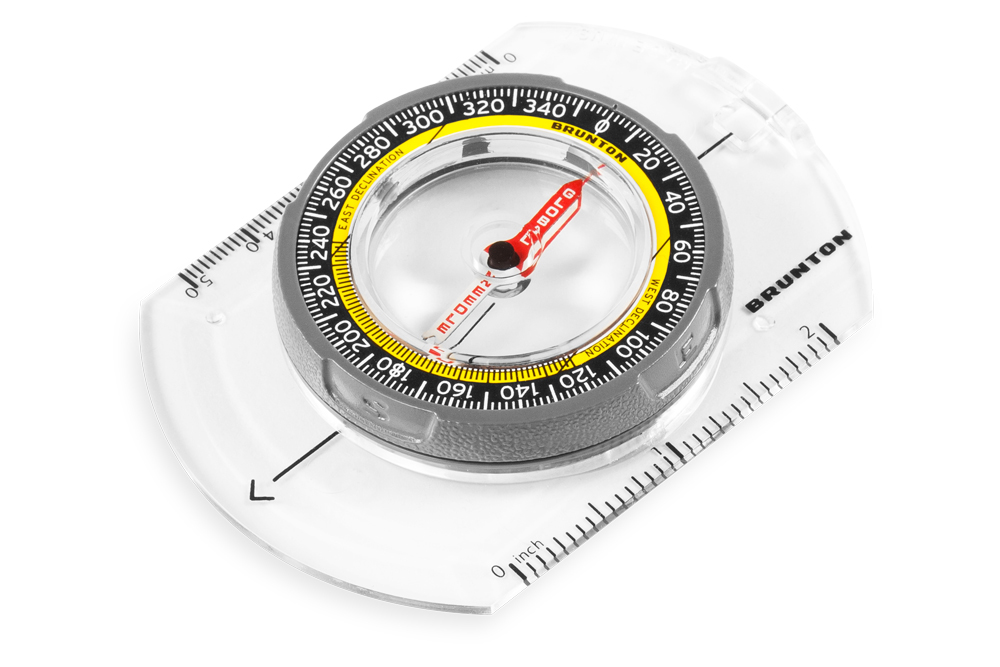
Last, we’ll add a few small necessities into our pack, including stormproof matches and a mylar space blanket. These are detailed in our packing list table below.
Minimizing Empty Space
So where’s the rest of the stuff, you say? Great question. We’re keeping both empty pack space and weight to a minimum for several reasons.
First, you’re fooling yourself if you think you won't be tempted to impulsively grab a few less-than-necessary items around the house, in the car, or wherever you happen to be when you need to grab your pack and go. These items might include the half-eaten box of Oreos on the kitchen counter. The extra pair of sneakers. A second firearm in addition to your EDC. The framing hammer? Seriously? If there's a ton of extra room in your pack, it's possible you'll fill it up with hoarded gear once panic sets in, defeating the purpose of this project.
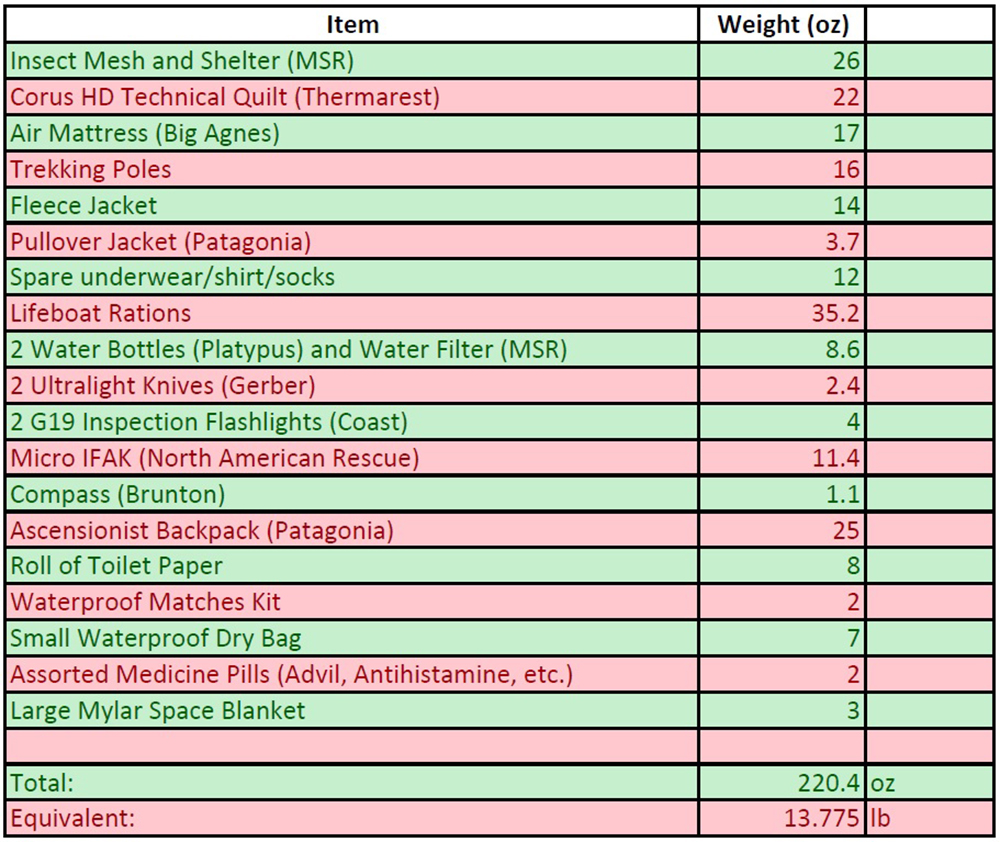
Here's a run-down of all the items we included in our ultralight bug-out bag setup.
Second, having everything we might possibly need just isn’t the point of our ultralight bug-out bag. The point is to have the bare minimum of necessities so that we can stay mobile, walk all day, and even run if we have to. We’re looking for a head start, not an Ark. Otherwise we’d bring a bug-out diesel generator and a bug-out big green egg BBQ grill — we might even save up for a bug-out RV so we don't have to walk.
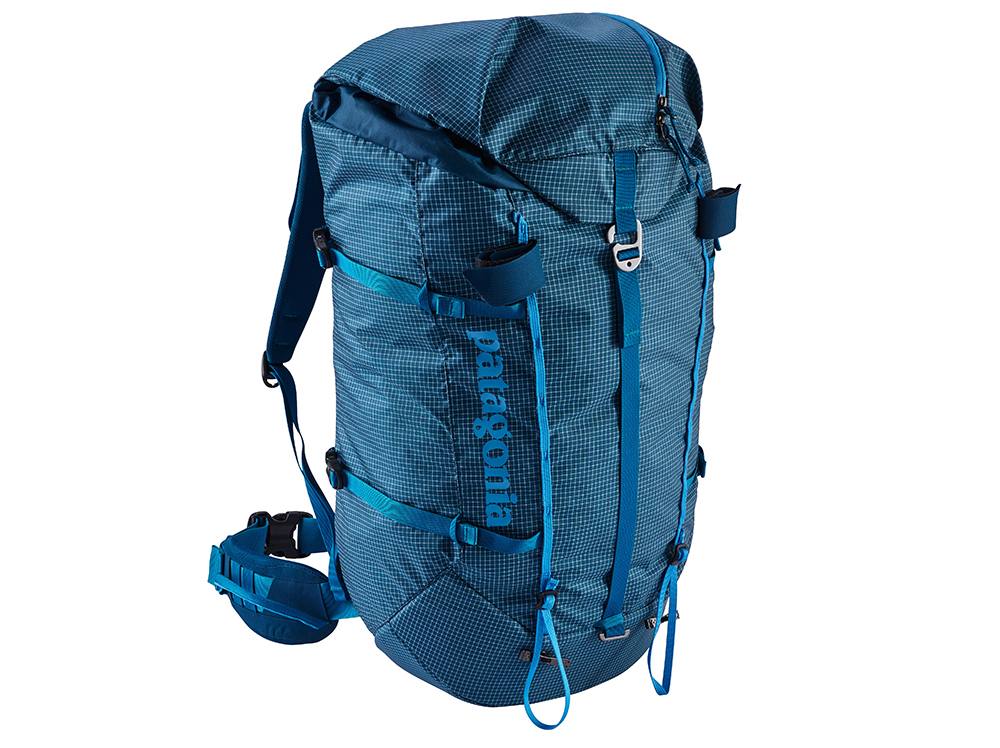
The light 30L Ascensionist pack will serve as the vessel for our gear.
With this minimal philosophy in mind, each of these items will get stuffed into an Ascensionist 30L backpack from Patagonia. At 1.6 pounds, it’s small and extremely light. We want a small pack for this type of ultralight loadout. It helps keep us from inadvertently over-packing, and falling into the trap of adding more gear just because we have more room (like we mentioned above). As shown in the detailed list, our total weight at this point is just under 14 pounds which we think is a great start.

We’re also not going to strap a bunch of stuff to the outside of our pack, looking like some casting reject from Call of Duty: Future Infinity Galactic Warfare VII. For the same reason we probably won’t go around making campfires — we want to maintain a low profile. Kephart himself pioneered this Gray Man concept years ahead of his time. “The whole equipment, except the few light articles worn on the person, stows inside a pack sack of moderate dimensions. There is nothing exposed to advertise your mission; so you give the idle curious something to puzzle and fret over — which is good for them.”
We couldn’t have said it better ourselves. Cheers to you, Mr. Kephart. And cheers to producing an ultralight bug-out bag that won't slow us down when the time comes.
To learn more, check out our 12 Tools for Survival, our buyer's guide to bug-out hammocks or even learn how to love backpacking in the rain.
About the Author
Andrew Schrader is a licensed professional engineer and is certified by the U.S. Army Corps of Engineers as an Urban Search and Rescue (USAR) Structures Specialist. His company, Recon Response Engineering LLC, advises state and federal government organizations on the subject of urban search and rescue and building collapse. He recently assisted the U.S. Department of State’s Italian Consulate in the development of their post-earthquake response and rescue protocol. You can follow him on Instagram at @reconresponse.


